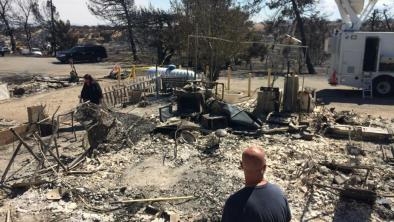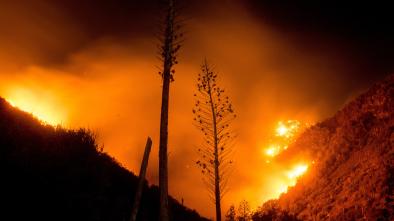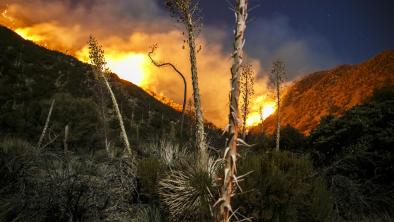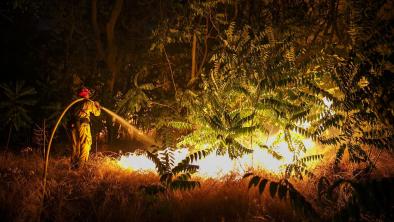Science Source
Incorporating Anthropogenic Influences into Fire Probability Models: Effects of Human Activity and Climate Change on Fire Activity in California
- States the costly interactions between humans and wildfires throughout California demonstrate the need to understand the relationships between them, especially in the face of a changing climate and expanding human communities
- Assesses the role of climate and anthropogenic influences on the state’s fire regimes from 1975 to 2050
- Develops an empirical model that integrates estimates of biophysical indicators relevant to plant communities and anthropogenic influences at each forecast time step
- Finds that anthropogenic influences account for up to fifty percent of explanatory power in the model
- Finds that the total area burned is likely to increase, with burned area expected to increase by 2.2 and 5.0 percent by 2050 under climatic bookends (PCM and GFDL climate models, respectively)
- Finds the two climate models show considerable agreement, but due to potential shifts in rainfall patterns, substantial uncertainty remains for the semiarid inland deserts and coastal areas of the south
- Finds that given the strength of human-related variables in some regions, however, it is clear that comprehensive projections of future fire activity should include both anthropogenic and biophysical influences
- Finds that previous findings of substantially increased numbers of fires and burned area for California may be tied to omitted variable bias from the exclusion of human influences
- States the omission of anthropogenic variables in our model would overstate the importance of climatic ones by at least 24%
Related Content
Headline

Aug 22, 2016 | The Weather Channel
Firefighters Have a Strong Hold On California's Blue Cut Fire, Which Has Destroyed Dozens of Homes, Officials Say
Headline

Aug 22, 2016 | NPR
Firefighters Gain Ground On California's Blue Cut Wildfire
Headline

Aug 19, 2016 | Los Angeles Times
96 homes, 213 other buildings destroyed in massive Blue Cut fire
Headline

Aug 19, 2016 | Los Angeles Times
Raging Blue Cut fire leaves some homes in smoldering ruins, but scope of loss still a mystery


